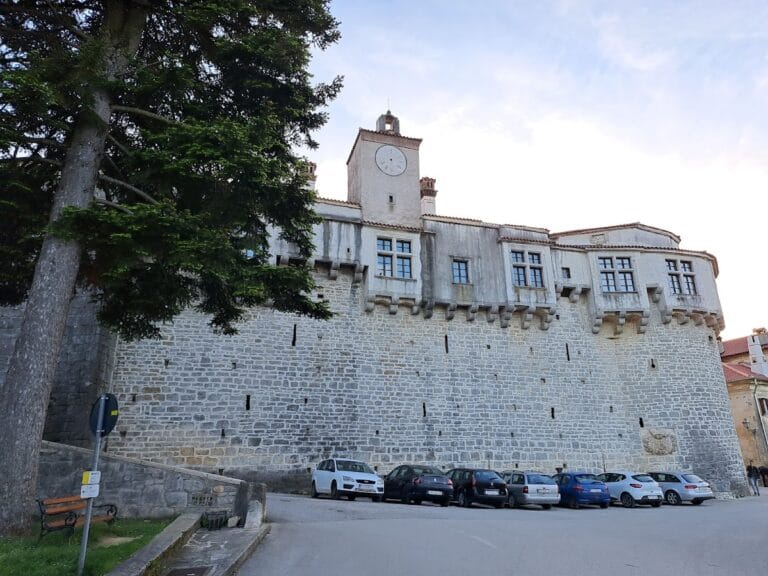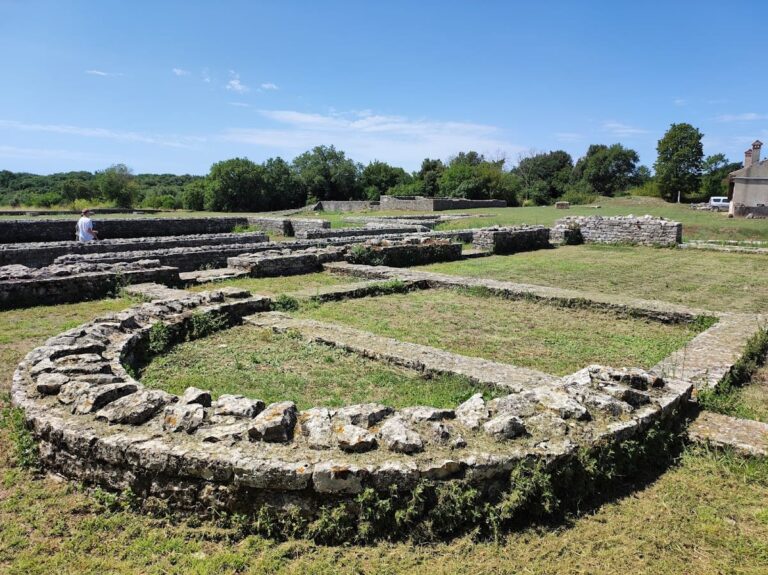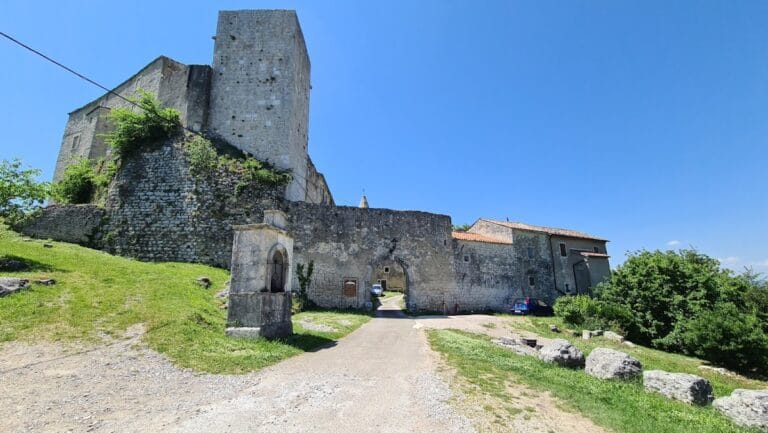Castello Morosini-Grimani: A Renaissance Castle in Svetvinčenat, Croatia
Visitor Information
Google Rating: 4.7
Popularity: Medium
Google Maps: View on Google Maps
Official Website: www.grimanicastle.com
Country: Croatia
Civilization: Unclassified
Remains: Military
History
Castello Morosini-Grimani stands in the municipality of Svetvinčenat in modern-day Croatia. Its origins date back to the Middle Ages when its earliest core was constructed in the 12th century by local builders aiming to protect the settlement due to the strategic position on a key trade route linking Istria’s interior with its coastal areas.
During the 13th century, control of the castle was held by the de Castro-Pola family, who maintained its defensive function as conflicts over this valuable region unfolded. In 1467, ownership transferred to the Morosini family, Venetian nobility who completed the castle’s fortifications by 1485. These works enhanced its status as a Renaissance architectural example in the Istrian landscape, marking an evolution from a purely medieval fortress to a more complex stronghold.
In 1589, through marriage alliances, the renowned Grimani family from Venice took possession of the castle. They carried out significant rebuilding following a damaging fire in 1586, reshaping the structure to serve both as a fortified defense post and as an administrative residence for managing the area. The Grimani period was characterized by the dual need to withstand external threats—especially from Ottoman and Austrian advances—and to project noble authority locally.
Despite later challenges, including a fire in 1616 that harmed the castle’s interior, it remained a defensive bastion and noble seat for over 200 years. The fall of the Venetian Republic in 1797 led to Habsburg Austrian rule in the region, during which the castle lost much of its military relevance. The 19th century saw the building’s decline, culminating in partial looting and abandonment.
In the 20th century, efforts by Austrian authorities initiated protective measures to preserve the castle as a monument. After World War II, restoration projects by the Yugoslav government in the 1960s and 1970s sought to conserve the structure’s integrity, securing its Renaissance features and preparing it for future cultural use.
Remains
The Castello Morosini-Grimani presents a square layout anchored by three large corner towers, one of which functions as the mastio, or keep—a central stronghold historically crucial for defense. These towers, alongside the thick, high curtain walls, were constructed with durable materials typical of Renaissance fortifications and include battlements and narrow arrow slits designed to protect defenders while allowing them to repel attackers.
Originally, the castle was surrounded by a moat that enhanced its defensive capacity by creating a barrier to siege forces. Though no longer filled with water today, the moat’s presence can still be appreciated as part of the overall defensive design.
The fortified main gate is distinguished by the display of the Grimani family coat of arms above it, directly linking the structure to its noble Venetian owners who undertook major restorations in the late 16th century. Passing through this entrance leads into a spacious internal courtyard, which historically served multiple purposes such as daily activities and as a secure space during military actions.
Inside the castle, the interior spaces have been adapted to house exhibition rooms that narrate the history of the Grimani family and the local town of Svetvinčenat. These rooms also provide insight into the political and military events that shaped the region, which the castle itself witnessed. The castle’s walls, towers, and courtyard have been carefully restored to retain the character of a Renaissance fortification, preserving its architectural and historical authenticity for educational purposes.










